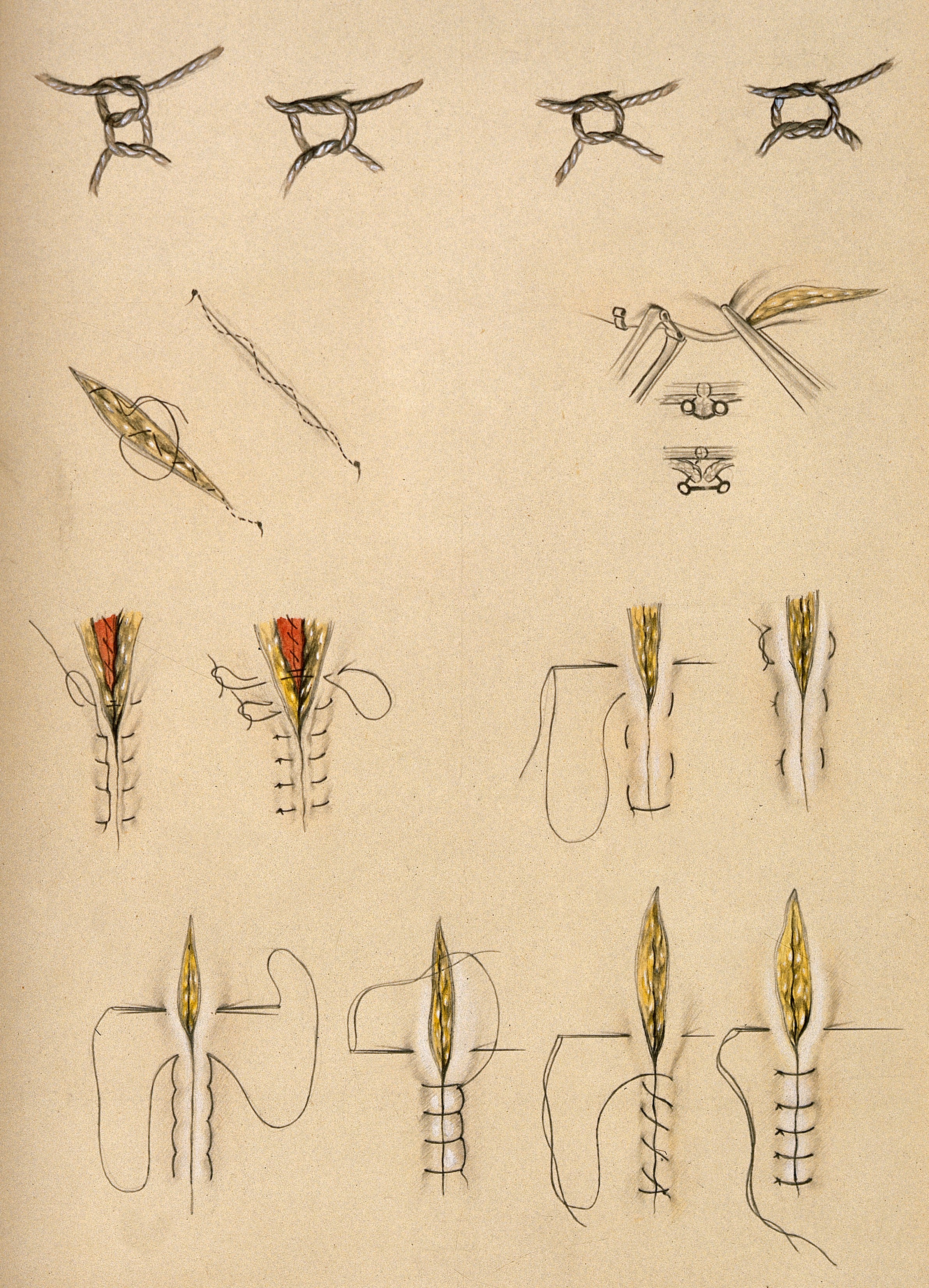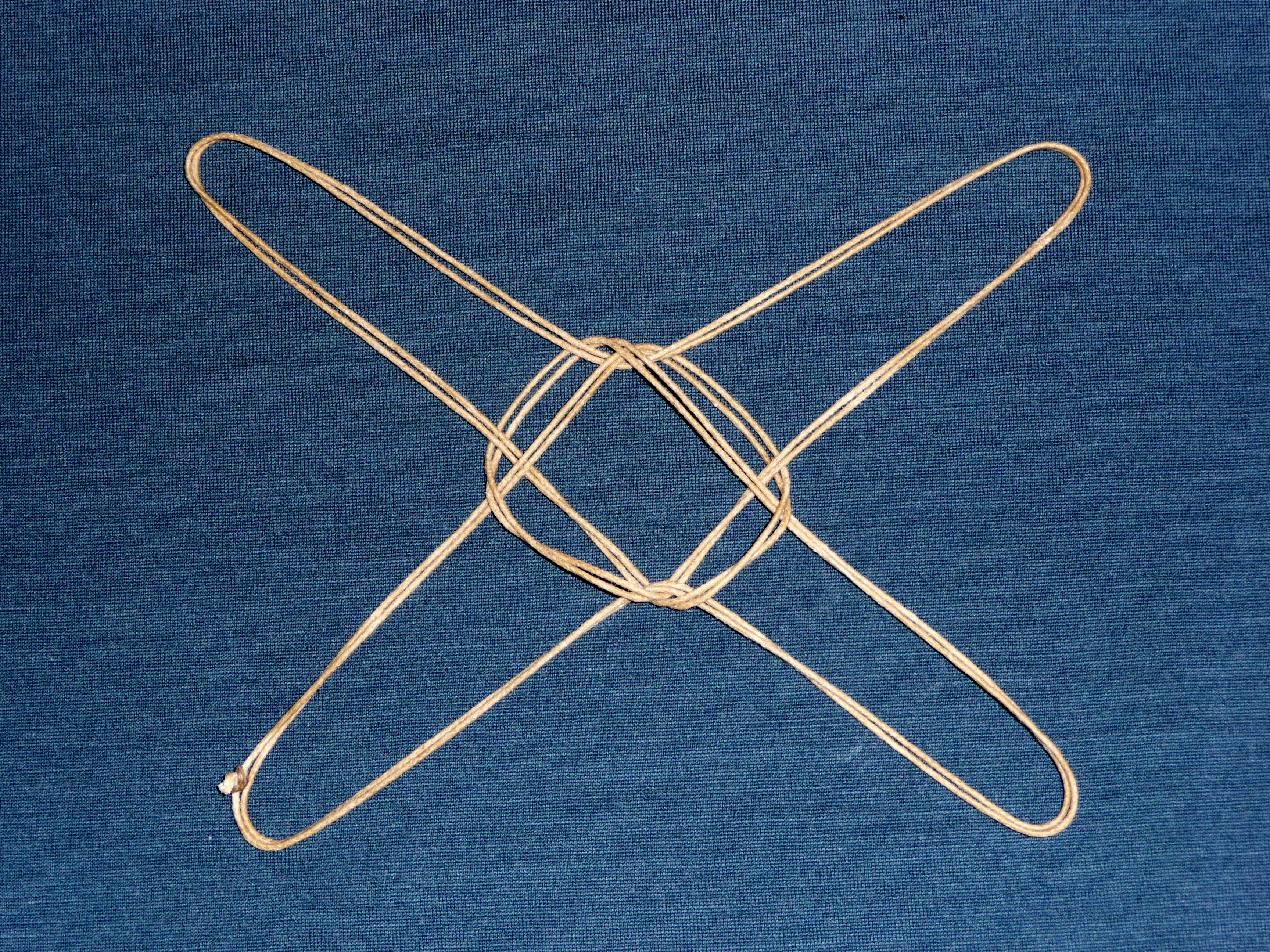Surgical Knot on:
[Wikipedia]
[Google]
[Amazon]
Surgical knots (ligatures) are the knots used to bind suture materials together while binding tissue in surgery. They are used in medical and veterinary settings.

 Surgical knots have been used since the first century when they were described by Greek physician
Surgical knots have been used since the first century when they were described by Greek physician
File:Roeder Knot.svg, Roeder knot
File:Von Leffern knot.jpg, Von Leffern knot
Surgical Knots, Animated Surgical Knots
Surgical procedures and techniques Surgical stitches

History
 Surgical knots have been used since the first century when they were described by Greek physician
Surgical knots have been used since the first century when they were described by Greek physician Heraklas
Heraklas ( grc-gre, Ἡρακλᾶς) was a Greek physician of the 1st century AD whose descriptions of surgeons' knots and slings are preserved in book 48 of Oribasius' ''Medical Collections'' (Ἰατρικαὶ Συναγωγαί, ''Iatrikai ...
in a monograph on surgical knot
A knot is an intentional complication in cordage which may be practical or decorative, or both. Practical knots are classified by function, including hitches, bends, loop knots, and splices: a ''hitch'' fastens a rope to another object; a ' ...
s and slings. In the past, the training of astronauts has included the tying of surgical knots.
Application
The effective tying of surgical knots is a critical skill for surgeons since if the knot does not stay intact, the consequences may be serious such as after pulmonary resection,laparoscopic
Laparoscopy () is an operation performed in the abdomen or pelvis using small incisions (usually 0.5–1.5 cm) with the aid of a camera. The laparoscope aids diagnosis or therapeutic interventions with a few small cuts in the abdomen.Medlin ...
cholecystectomy, and hysterectomy. The primary goal of surgical knot tying is to allow the capacity of a knot (or ligature) to be tightened and remain tight. Ligatures are locked and finished multiple overhand knots. Nevertheless, slipping sometimes happens before the addition of the final knot, particularly during an instrument tie.
Knots
The constrictor knot is the knot most used for binding. The constrictor knot closely resembles theclove hitch
The clove hitch is a type of knot. Along with the bowline and the sheet bend, it is often considered one of the most important knots. A clove hitch is two successive half-hitches around an object. It is most effectively used as a crossing kno ...
except the two ends form an overhand knot
The overhand knot is one of the most fundamental knots, and it forms the basis of many others, including the simple noose, overhand loop, angler's loop, reef knot, fisherman's knot, Half hitch, and water knot. The overhand knot is a stopper, ...
under the overriding turn. New knots have been described. Other commonly employed knots are surgeon's knot
The surgeon's knot is a surgical knot and is a simple modification to the reef knot. It adds an extra twist when tying the first throw, forming a double overhand knot. The additional turn provides more friction and can reduce loosening while t ...
, modified surgeon's knot, single-double other side knot, strangle knot and modified miller's knot
A miller's knot (also sack knot or bag knot) is a binding knot used to secure the opening of a sack or bag. Historically, large sacks often contained grains; thus the association of these knots with the miller's trade. Several knots are known ...
. The Surgeon's knot
The surgeon's knot is a surgical knot and is a simple modification to the reef knot. It adds an extra twist when tying the first throw, forming a double overhand knot. The additional turn provides more friction and can reduce loosening while t ...
has been a standard ligature but in one study it demonstrated slippage.
While the suture is being put in place a knot is used to secure the suture. Tying the knot may be done inside the body or outside the body. Of these two options knot tying inside the body takes some time to learn because the surgeon is required to use laparoscopic instrumentation rather than their fingers to loop the suture. Tying the knot outside the body is simpler for most surgeons because the suture is looped with fingers as in traditional tying. Each knot formed has to be guided through a laparoscopic cannula
A cannula (; Latin meaning 'little reed'; plural or ) is a tube that can be inserted into the body, often for the delivery or removal of fluid or for the gathering of samples. In simple terms, a cannula can surround the inner or outer surfaces ...
and made tight with a knot-pusher to create the knot.
In laparoscopic surgery, a stronger braided suture is often preferred if the knot pusher is used because suture fraying is a side effect of this technique. A disadvantage of knot tying being done outside the body is that it often causes more tension and can cause tissue tearing while suturing delicate tissue.
Alternatives and risks
An alternative to the surgical knot is a disposable clip that is placed at the end of the suture to keep stitches secure. A hemoclip is a titanium V-shaped clip with extensions that are squeezed together during application. The clips are available in various sizes and were originally designed to compress vessels forhemostasis
In biology, hemostasis or haemostasis is a process to prevent and stop bleeding, meaning to keep blood within a damaged blood vessel (the opposite of hemostasis is hemorrhage). It is the first stage of wound healing. This involves coagulation, ...
.
Tying a surgical knot is done inside the body or outside the body. Learning to tie a surgical knot inside the body is slightly more difficult and has a steeper learning curve. This is because the surgeon uses laparoscopic instruments. Tying the knot outside the body is simpler for most because the suturing is with fingers as in traditional tying. When a surgical knot is formed outside the body it must be drawn into a laparoscopic cannula. Stronger braided suturing thread is preferred because the knot has a tendency to fray as it is slid down the cannula. At the end of the running suture line, clips can be placed across the suture tail. Barbed suture is a knotless surgical suture that has a pattern of barbs on its surface. These barbs lock the suture into the tissue, eliminating the tying of knots. Barbed sutures are typically used in cosmetic and reconstructive surgery. There are concerns that knot tying may be related to glove puncture but a current study demonstrated that instead friction from continuous suturing only left ‘marks’ on the little finger with no glove puncture.
Training
Much effort goes into the training of medical students regarding the surgical skill of knot tying. One method, called “ Quiet Eye Training” has shown greater success than more traditional forms of instruction.See also
*List of bend knots
This is a list of bends. A bend is a knot used to join two lengths of rope. They are used in a variety of situations, including climbing, sailing, and securing loads. Bend knots are classified based on their ability to be tightened or released, th ...
* List of binding knots
A binding knot is a knot that may be used to keep an object or multiple loose objects together, using a string or a rope that passes at least once around them. There are various binding knots, divided into two types. Friction knots are held in ...
* List of knots
This list of knots includes many alternative names for common knots and lashings. Knot names have evolved over time, and there are many conflicting or confusing naming issues. The overhand knot, for example, is also known as the thumb knot. The ...
* List of surgeries by type
Many surgical procedure names can be broken into parts to indicate the meaning. For example, in gastrectomy, "ectomy" is a suffix meaning the removal of a part of the body. "Gastro-" means stomach. Thus, ''gastrectomy'' refers to the surgical remo ...
References
{{reflistExternal links
Surgical Knots, Animated Surgical Knots
Surgical procedures and techniques Surgical stitches